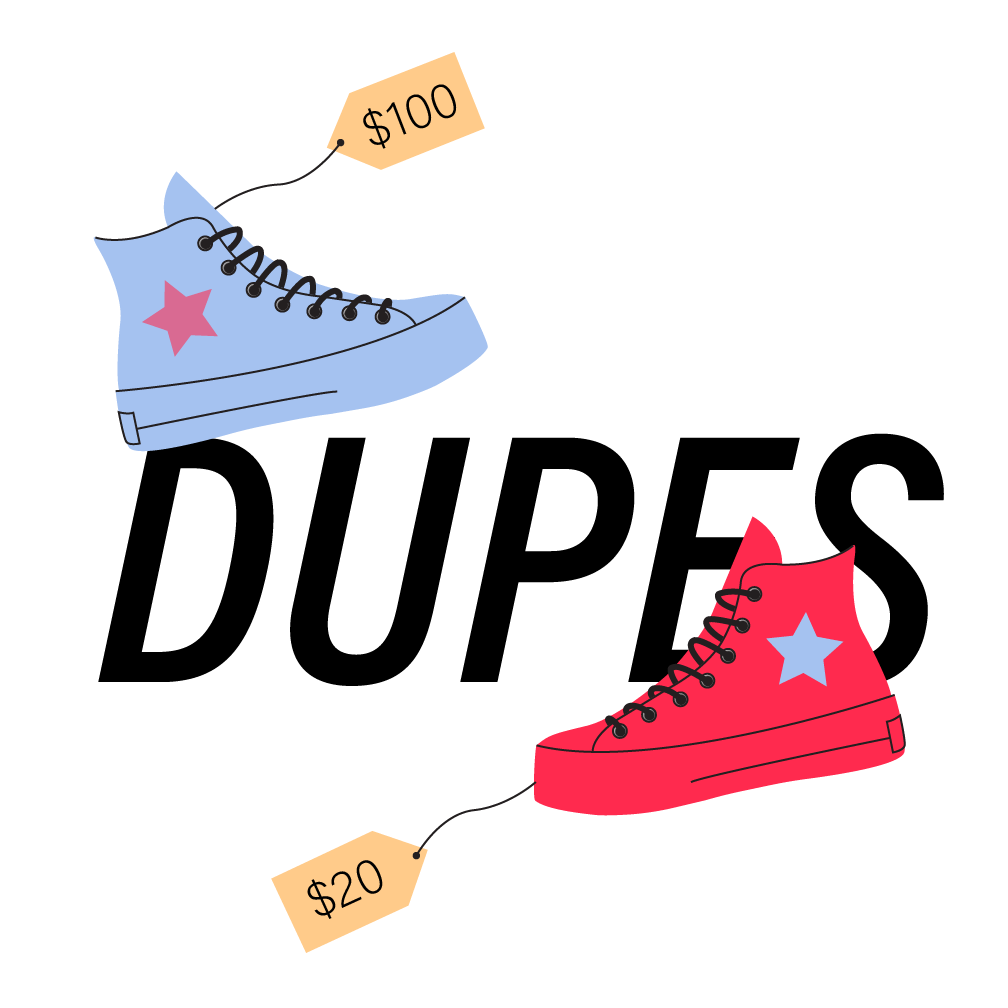“Run, don’t walk! Hoka dupes,” one friend shouts to the camera, pointing to a pair of Sketchers at a Target.
“Oh my god, guys, is this a Skims dupe?,” the other mocks, holding up a fuzzy robe that slightly resembles the brand Skims.
The pair’s encounter on the popular social media platform TikTok received hundreds of thousands of views – a clear indicator that the “dupe” trend is taking the app by storm. But not all of the reactions to the video are positive.
The trend, which was once derived from people finding cheaper versions of expensive products has become so popular that it has taken on a new evolution. The trend has now transformed into TikTok creators using the word dupe (or “doop”) to allude to cheaper versions of products that are nothing like the original. For example, saying “iPhone dupe” when referring to a toy phone.
More recent versions of the trend even refer to regular people and places as dupes for celebrities and popular travel destinations. For example, a small creator may call their “Get Ready With Me” TikTok a dupe for Alix Earle.
Although many may find this take on the trend entertaining, others think it is problematic and find it straight-up annoying.
“I seriously don’t think there is anything funny about the trend,” sophomore public relations major Isabella Barty-King said. “I don’t have a problem with dupes. I love my Amazon workout sets that pass as Lululemon — I just don’t think the trend is funny.”
To many, the new twist on the trend is something they’d rather have off of their “For You” page.
Some argue that for those who cannot afford on-brand items, the popularization of dupes has allowed off-brand items the opportunity to be “in style.” Others fear that mocking the dupe trend may reverse the positive effects that dupe culture once had.
The trend was not satirical at first — it originated when popular beauty and fashion influencers found cheaper versions of high-end products to share with their followers.
Sophomore business major Rosie Ancona shared her love for the L’Oreal Paris Lumi Glotion, a $15 dupe for the infamous $46 Charlotte Tilbury Flawless Filter.
“I’ve tried both and they both succeed at making my skin even-toned and glowy,” Ancona said. “Why not go with the cheaper option?”
Although some love their inexpensive, trendy items, the idea of a dupe — or duplicate — is nothing new. Consumers have referred to cheaper versions of brand-name items as off-brand, copies or knockoffs for years. However, brand-name items were more widely accepted and preferred over knockoffs.
Many complain that the sudden popularization of knockoffs delegitimizes the struggle that dupe-wearers endured in secret when it was embarrassing to do so.
“People think they’re discovering some sort of holy grail when they find a top that looks like it’s from Lululemon, but off-brand versions of things have been around forever,” sophomore marine science major Amanda Albanese said. “I had to wear Target brand Converse in elementary school and that made me anything but popular.”
Others feel like the trend is positive and encourages people who can only afford less-expensive versions of things to buy them confidently.
“I just think dupes are a great way for people to participate in trendy clothes and makeup without spending the money needed to keep up with those trends,” Ancona said. “I think the popularization of knockoffs will finally allow people to dress and look how they want without breaking the bank or feeling embarrassed.”
Some fear the dupe trend promotes fast fashion by causing cheaper, lower quality goods found at sites like Shein, Zara and H&M to become popularized. In a similar way, the trend may hurt smaller businesses that design these trendy pieces and sell them at a more expensive price, as they’re competing with bigger, cheaper brands.
No matter the opinion, it is clear that dupes will dominate social media platforms like TikTok until the next big trend takes over.






